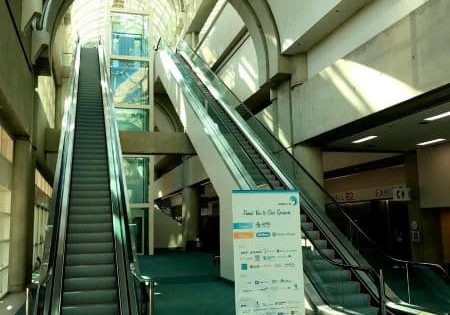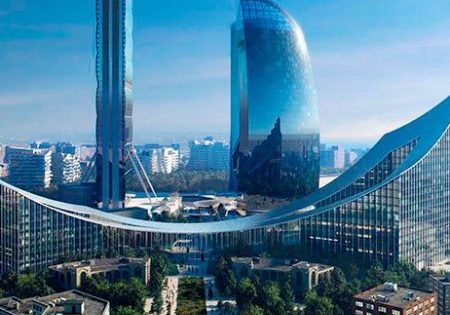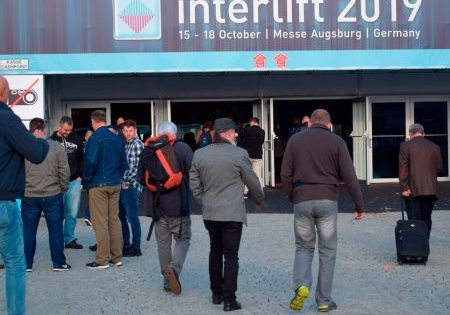At the VeryTop
Jan 1, 2020
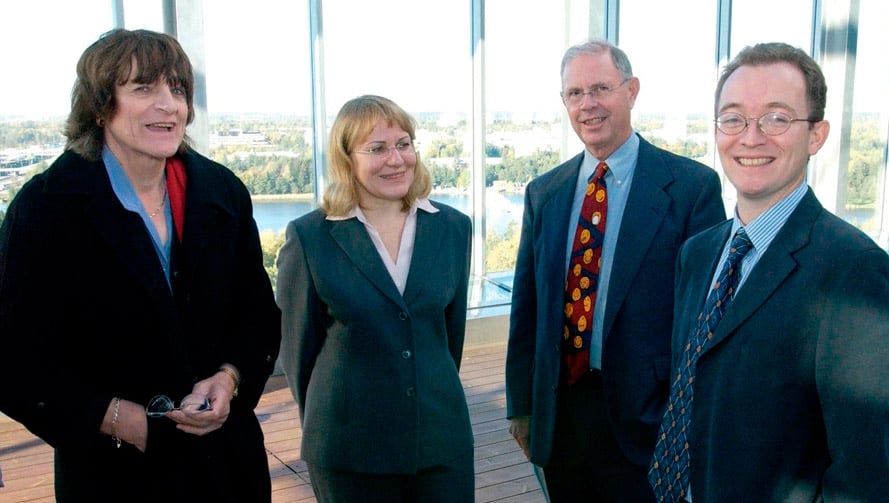
Marja-Liisa Siikonen, one of Finland’s most notable female inventors, has earned industrywide respect.
Among Finland’s top women inventors, with more than 200 international patents to her name, Marja-Liisa Siikonen (MLS) has come a long way since growing up as a farmer’s daughter in Seinäjoki, Finland, a village approximately 400 km north of Helsinki. Following her brother to Helsinki University of Technology (HUT, now Aalto to University), Siikonen earned a master’s degree in Technical Physics; her thesis was on radiation heat transfer in a loss-of-coolant accident at a specifc type of nuclear power plant. Originally interested in natural sciences, Siikonen’s vertical- transportation (VT) career began in 1984 when KONE hired her as a design engineer.
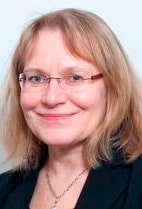
Once she determined VT as her career path, Siikonen pursued a PhD in Applied Mathematics at HUT; her thesis was on planning and control of elevators serving high-rise buildings.
Rick Barker, principal at VT consultancy Barker Mohandas, LLC, says Siikonen is “at the very top of her profession,” as she knows how to
determine VT system size, speed and more with a precision admired industrywide. If not for her, Barker says, VT systems such as the one serving the supertall PNB 118 in Kuala Lumpur (EW, November 2018) that uses harmonized dispatch — built by KONE and collaborated on by Dr. Janne Sorsa — may not have become a reality. As she approaches full retirement, Siikonen is hardly idle, as she chairs a subgroup in the International Organization for Standardization (ISO) committee on a new standard on elevator/lift system planning and is writing a book.
Siikonen is not all work, though. She sings in a choir, and enjoys vacations with family, outdoor sports and reading for pleasure. She took the time to talk with your author (KW) about her background, career, personal life, work on international code committees, advice for young people considering VT careers and what her future holds.
KW: When and how did your KONE career begin?
MLS: After earning my MSc, I started work at Nokia Corp. on a scale operating room simulator used to train nuclear power plant operators. After some time, Nokia sold its nuclear power plant simulator department. My husband saw a newspaper ad for an elevator trafc specialist at KONE. My colleague from the university worked at KONE, and recommended the company to me. I started in the R&D department, where my initial work involved coding a software-based lift trafc simulator to test group control systems. The frst software-based control systems were launched about the same time.
KW: What roles have you held at KONE and what did they entail?
MLS: In the beginning I worked as a design engineer, then as a project manager in R&D. At that time, KONE launched the Trafc Master System (TMS) microcomputer elevator controller piloted in the Humana Building in Louisville, Kentucky. TMS used mathematical methods such as artifcial intelligence and fuzzy logic in call allocation. In 1995, I moved to KONE’s High Rise Center, later, Major Projects as a manager and, later, director of traffic Planning. In 2008, I returned to R&D as director of People Flow Planning, but continued simultaneously working in Major Projects. In 2018, I retired from my main role but continued working on some projects, such as on the ISO Technical Committee (ISO/TC) 178 Working Group (WG) 6, Subgroup (SG) 5.
KW: When did you become involved in chairing the ISO Committee for the new standard and what does it involve? What progress has been made, and what is the goal?
MLS: In my work planning buildings’ VT systems, I often encountered the question of whether there are standard recommendations for how to select buildings’ elevators. The answer was that guidelines and handbooks about the matter — but no standards — exist. There is ISO 4190-6:1984, however, for residential buildings.
In 2013, participants in an ISO/TC 178 plenary meeting in NYC decided to update the ISO 4190-6:1984 standard. ISO/TC 178 WG 6 nominated me as a convener of SG 5, to do the update. With 17 experts, SG 5 gathered for the frst time in spring 2014. The goal of the update was to extend the existing standard to buildings other than residential. In addition to selection of elevators for residential buildings, elevators for hotels and ofce buildings are included in the new document. In selecting the elevators for buildings, calculation and/or simulation methods can be used that cover all types of controls, including destination dispatch. According to the new draft, ISO/DIS 8100-32, selection of a rated load can be based on passenger mass or passenger mass and area. This new document is set to go to final voting this month to become a standard.
KW: What can you tell me about your upcoming book?
MLS: The work is ongoing. The subject is “People Flow in Buildings,” and it should be ready within a year or so.
KW: Rick Barker says your faith in the harmonized dispatching system for PNB 118 was key to making it a reality. Can you tell me about that?
MLS: Rick, Janne Sorsa and I discussed the harmonized dispatching principle a few years ago. The current de facto, standard destination-control system fixes each passenger call to a specific car and shows the car identifier on the passenger terminal immediately after call registration. The harmonized dispatching system differs from the current system on upper/office floors, where the serving car is indicated by a lantern when the car is about to stop on the call floor.
[Dr. Sorsa] developed this kind of call allocation principle in KONE’s building traffic simulator. Simulation results showed that harmonized dispatching is more efficient than the current standard. For the [PNB 118] project in Malaysia, Barker Mohandas specified the harmonized dispatching with double- deck elevators. KONE was the only elevator supplier to bid the system and received the order.After 9/11 in 2001, I started to emphasize that people should not only get around fast in tall buildings, but also get rapidly and safely out of buildings during emergencies.
KW: Tell me about your work on Occupant Evacuation Operations (OEO) elevators.
MLS: After 9/11 in 2001, I started to emphasize that people should not only get around fast in tall buildings, but also get rapidly and safely out of buildings during emergencies. I was surprised to discover that the number of floors and population does not affect the number of staircases in tall buildings. Elevator groups, on the other hand, are planned according to population and number of floors to guarantee certain handling capacity and constant building ingress/egress and evacuation times. For instance, in a building with 100 floors, during evacuation two staircases become crowded, and occupant evacuation can last two hours or more. With immediate elevator evacuation, where all elevators evacuate straight to the ground floor, the evacuation time is 20-30 min.
In 2004, we had a Council on Tall Buildings and Urban Habitat (CTBUH) taskforce meeting in NYC. Out of that, CTBUH published an emergency evacuation elevator systems guideline. EN 81-72 had already specified protected firefighters’ elevators, which provided the basis for the document and further development. I participated in many conferences discussing elevator evacuation modes and algorithms. Now, we see development of OEO elevators in the International Building Code and National Fire Protection Association NFPA 5000® code, and in ASME A17.1. EN 81-76 concerning evacuation of disabled persons using lifts in low and midrise buildings was published, as well as the technical specification ISO/TS 24744 on the requirements for lifts used to assist in evacuation. The work continues.
KW: Of what accomplishments are you most proud?
MLS: I was pleased to be nominated as the alumna of the year by the School of Science at Aalto University in 2015, and the person of the year by the Finnish CERN Society in 2016. I am an inventor in more than 200 international patents of which KONE is the proprietor.
Furthermore, I am proud of the people-flow planning culture established at KONE. It is rewarding to see that people- flow teams and the trained traffic experts continue the work I initiated.
KW: Do you have any mentors who made a big difference in your career along the way?
MLS: I am grateful to many people at KONE, including Nils-Robert Roschier, who hired me, Risto Kontturi and Johannes de Jong, who have encouraged my work along the way. I learned elevator traffic background from world-famous traffic experts. I even had the pleasure of meeting Dr. George Strakosch and Dr. John Fruin.
The biggest turning point in my career probably came when I started working in Major Projects to help design the VT systems serving high-rise buildings in locations such as Mecca and London. I enjoyed being part of a design team where I could help shape VT solutions for those tall buildings.
I learned elevator traffic background from world-famous traffic experts.
KW: What advice would offer to a young person considering a VT career?
MLS: Elevator planning for tall buildings is interesting, but demanding, work. You have to be dedicated and exact in your work, which can be laborious and repetitive. On the upside, you have the opportunity to travel to project meetings where you get to know interesting people such as building owners, dealers, famous architects and consultants. You will see the concrete results of your planning in real buildings, and are always on the edge of the latest designs. Most important to becoming good at whatever you do, however, is to first complete your studies in your specialized, chosen field.
KW: Tell me about your family.
MLS: My family consists of a husband and a son, and was recently extended by a lovely daughter-in-law. My husband, Timo, is a professor emeritus at Aalto University, but continues work in a private company. My son works as a postgraduate student in the Helsinki Institute of Physics co-operating with the (European Council for Nuclear Research).
KW: What do you like to do in your spare time?
MLS: I have many interests. Orienteering [a competitive sport in which participants find their way to various controls across rough country with the aid of a map and compass][1] has followed me from my youth. I sing in a choir as a mezzo- soprano, and work as a historian for my husband’s family. In the summertime, we spend a lot of time in our lake house.
KW: What do you read for pleasure?
MLS: I like classical and historical novels. During the past 20 years, I have also enjoyed reading detective stories, mostly by women authors such as Liza Marklund, Anne Holt, Patricia Cornwell and Agatha Christie. Recently, I finished [lead singer of The Who] Roger Daltrey’s autobiography.
KW: Where do you see yourself in five years?
MLS: I imagine spending more time with my family. I am also considering doing some consultancy work for tall building projects.
Reference
[1] merriam-webster.com/dictionary/orienteering
Get more of Elevator World. Sign up for our free e-newsletter.



